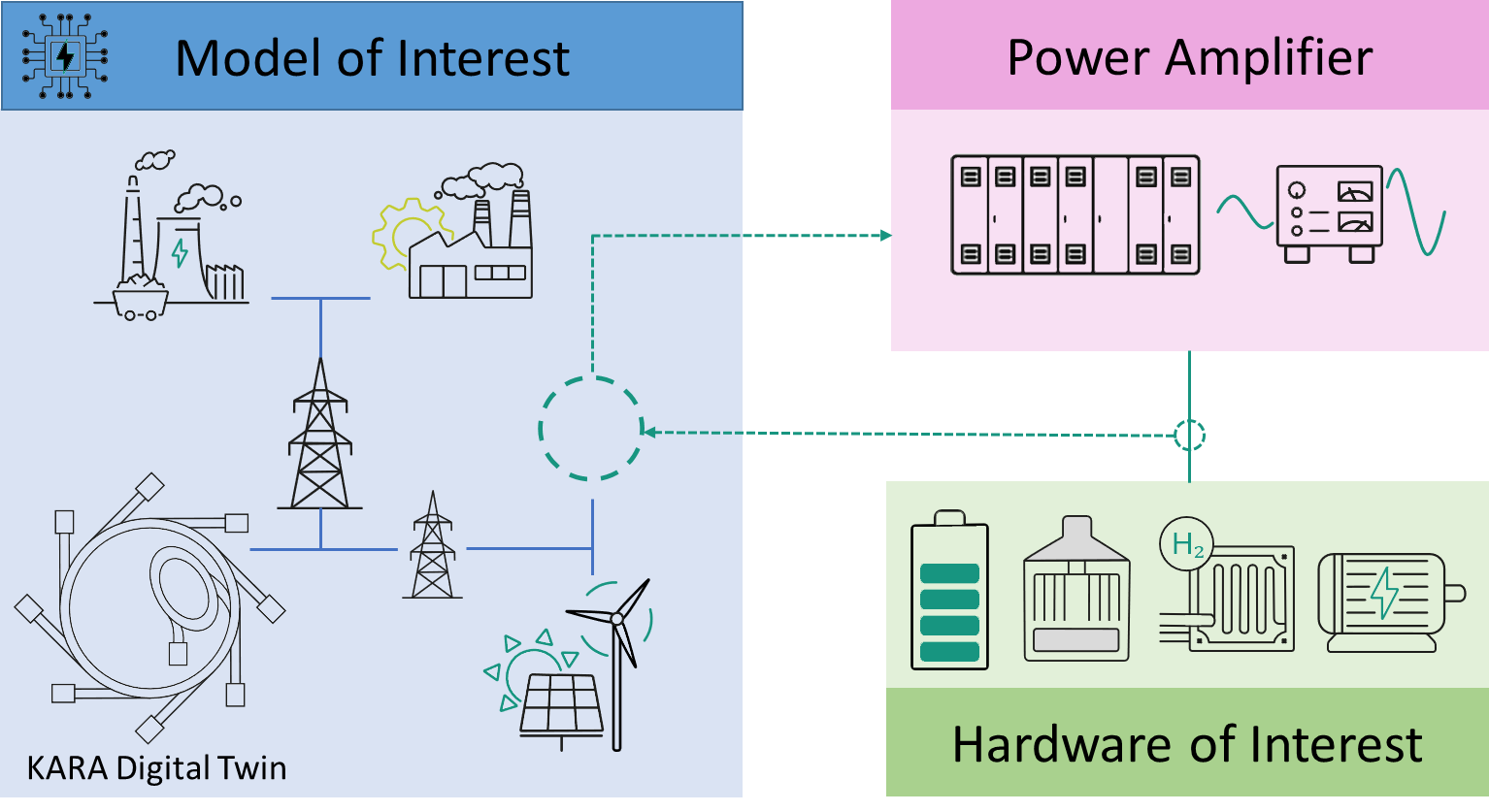AI-assisted accelerator-infrastructure
The Priorized Research Infrastructure of KIT combines the test facilities Karlsruhe Research Accelerator (KARA) and KIT Light Source.
It consists of a 2.5-GeV electron storage ring that accelerates electrons to a very high fraction of the speed of light and bends them around a circular path. As the electrons bend around the ring and undulate in insertion devices, they emit synchrotron radiation, producing light for beamlines. This radiation is then focused by mirrors and other optical components inside different beamlines. Each beamline is designed to deliver a specific type of synchrotron radiation to a particular experiment. For example, some beamlines deliver X-rays, while others deliver infrared or ultraviolet radiation. Circulating particles in a storage ring like KARA lose a small amount of energy due to the emission of synchrotron radiation. However, the particles are being re-accelerated by radiofrequency cavities each turn, so they maintain their high speed. The synchrotron radiation emitted by the circulating electrons is used for scientific research at the KIT Light Source.
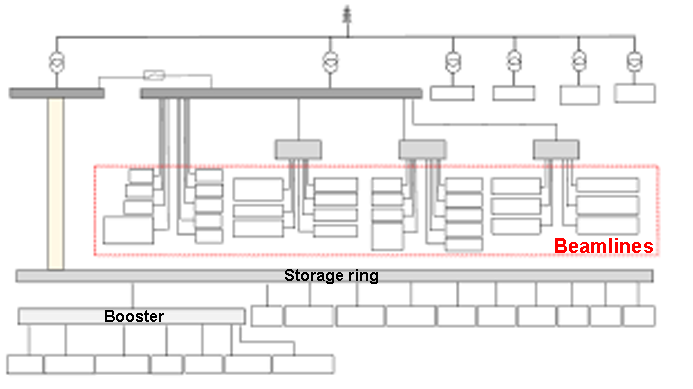
3 big operational challenges
Accelerators are complex and energy-consuming and thus require a stable and high-quality power supply typically provided by the public electrical grid. However, it is challenging to maintain a stable power supply due to the inability of accelerators to adjust their power requirements, mostly in the presence of a large in-flow of renewable power generation. As a result, accelerators have a negative impact on the management of the public grid, since, regardless of the state of the grid (e.g., congested or under stress), the facility still needs a steady power supply to conduct experiments effectively.
So, in particular, three main issues are known:
- High energy consumption
Large research facilities such as particle accelerators require enormous amounts of energy, with annual consumption reaching hundreds of GWh – similar to that of major European cities. Since only about half of Europe’s energy is sourced from renewables, these facilities contribute significantly to CO2 emissions. Rising energy costs complicate the situation further, highlighting the urgent need for sustainable solutions to reduce both environmental impact and financial strain on research institutions.
- High power peak
The energy requirement of KARA differs significantly between “stand-by” (200kW) and “active” operations (650kW), as is typical for a lot of energy-intensive facilities. These high power peaks present challenges regarding power supply as well as cost management: Firstly, these peaks can lead to line congestion, challenging the electrical grid and potentially causing disruptions in service. Secondly, energy pricing is often tied to the maximum power demand – the higher the peak consumption, the greater the overall energy costs. This dual issue not only increases operational expenses but also highlights the need for strategies to manage power peaks effectively, ensuring both reliability and cost efficiency in energy usage.
- High power supply quality required
Power quality issues for accelerators mainly stem from disturbances in the public power grid. When the grid experiences issues such as voltage dips or spikes, these fluctuations can significantly impact accelerator performance. Rapid changes in voltage may cause sensitive equipment to malfunction or shut down, leading to beam instability and delays in experiments. This instability also affects the accuracy of measurement and calibration devices, often resulting in the need to repeat experiments, which consumes additional resources and energy. Furthermore, grid-connected converters used in accelerators can inject harmonics into the power supply, disrupting the electrical system and causing more measurement inaccuracies. These challenges highlight the need for effective power management to ensure the stable and reliable operation of accelerator facilities.
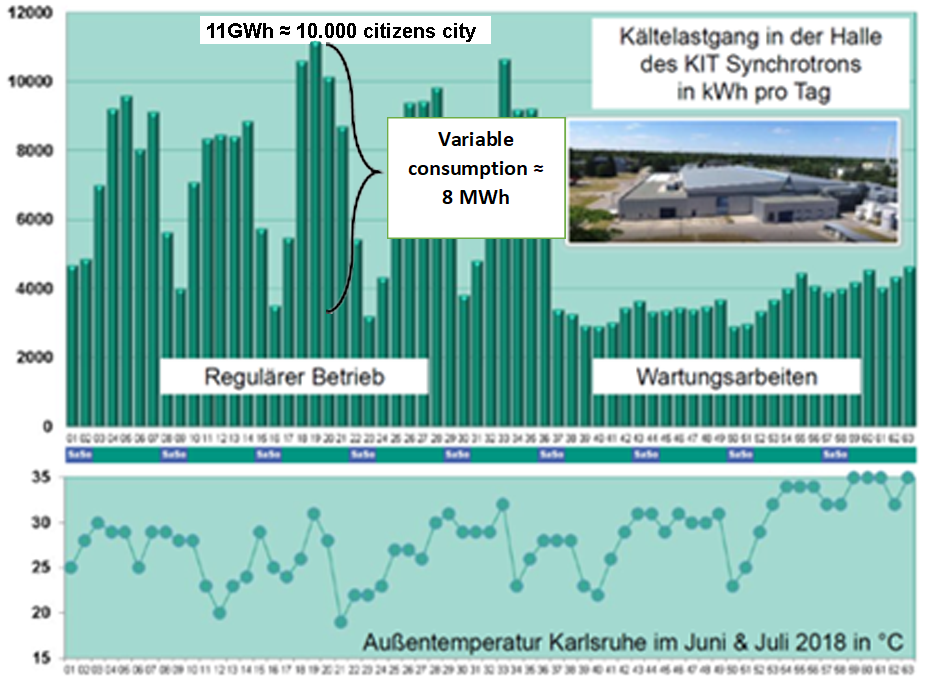
ACCelerator Energy System Stability Projekt (ACCESS)
In order to improve the stability and energy efficiency of accelerator operations, it is crucial to research and develop new energy solutions.
The ACCESS project is a joint effort between KIT and TU Darmstadt and aims to improve energy management and power quality for large-scale accelerator facilities. The main goal is to ensure a reliable power supply under changing grid conditions through the development of advanced power electronics, load management, and control approaches. Key facilities, such as the KARA synchrotron at KIT, are used as benchmarks for testing solutions before applying them to larger accelerators like DESY, HZB, and GSI.
Main achievements include:
- Digital Twin Development: Creation of a real-time simulation model for accelerator systems to validate energy solutions without disrupting operations.
- Power Quality Improvement: Development of a modular multi-level converter to stabilize grid conditions and compensate for voltage dips, harmonics, and other power disturbances.
At KIT, the project is a collaborative proposal between the Power Hardware in the Loop lab at Energy Lab and the KARA synchrotron at the Institute for Beam Physics and Technology.
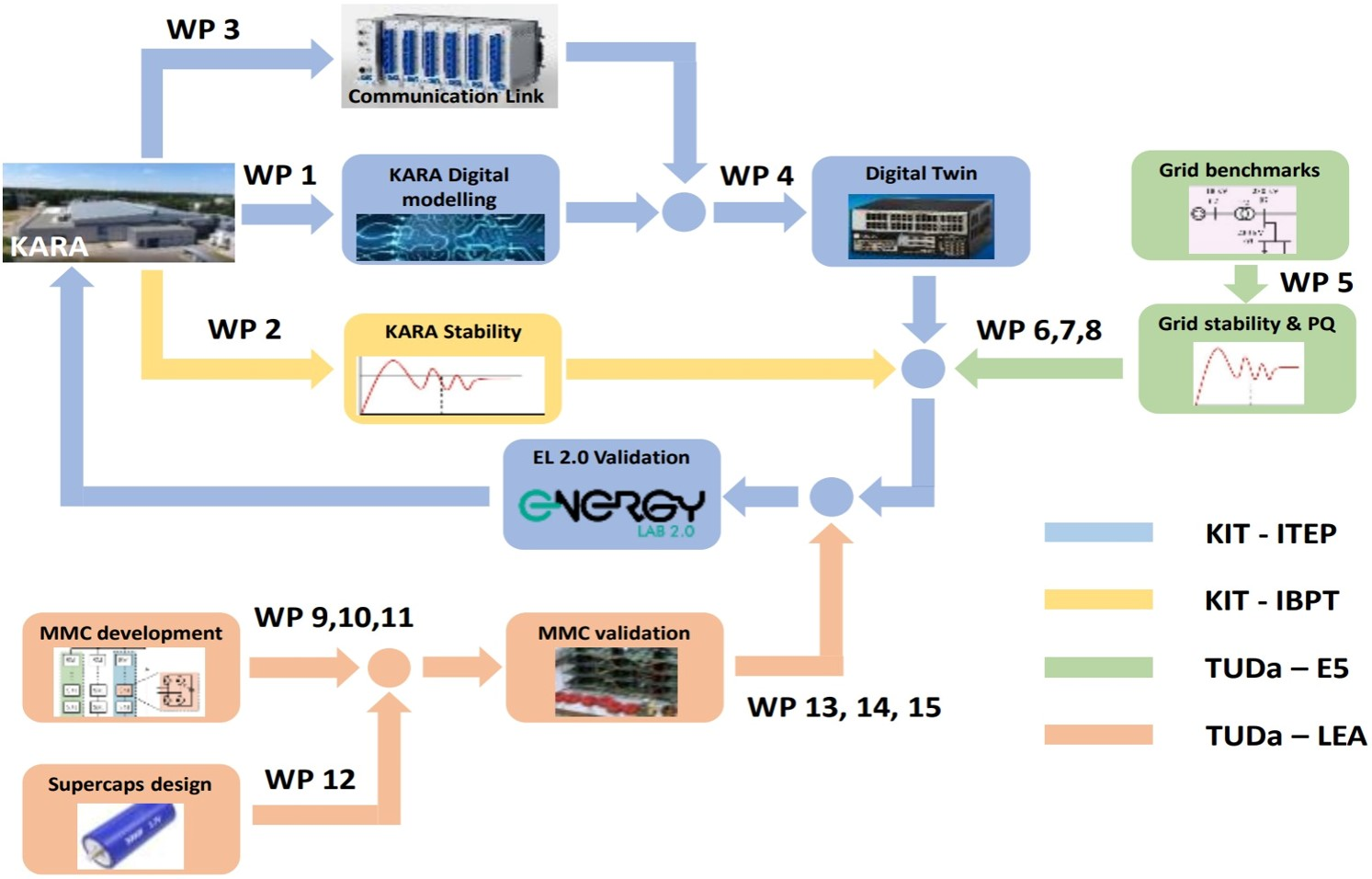
Real time simulation with a Digital Twin
As part of the KITTEN project, the main technical goal is to develop a digital replica of the KARA accelerators (digital twin) in a real-time simulation environment.
Therefore, we simulate the electrical grid of KARA in the digital real-time simulator at Energy Lab and reproduce a point of the simulated grid in the laboratory (such as a measured voltage) using a 1MVA Power Amplifier, which can then be tested with a digital twin of KARA.
To ensure the model's accuracy, there is a communication infrastructure between Energy Lab and KARA: Here the real-time power profiles are measured and transmitted between KARA and Energylab at a sampling rate of 10kHz. This communication infrastructure ensures that the digital twin accurately represents the physical facility and enables real-time experimentation and validation of energy management and power quality advancements.
In addition, the digital twin model needs suitable power electronic approaches to achieve improvements for real synchrotron facilities. These will be developed by TU Darmstadt.
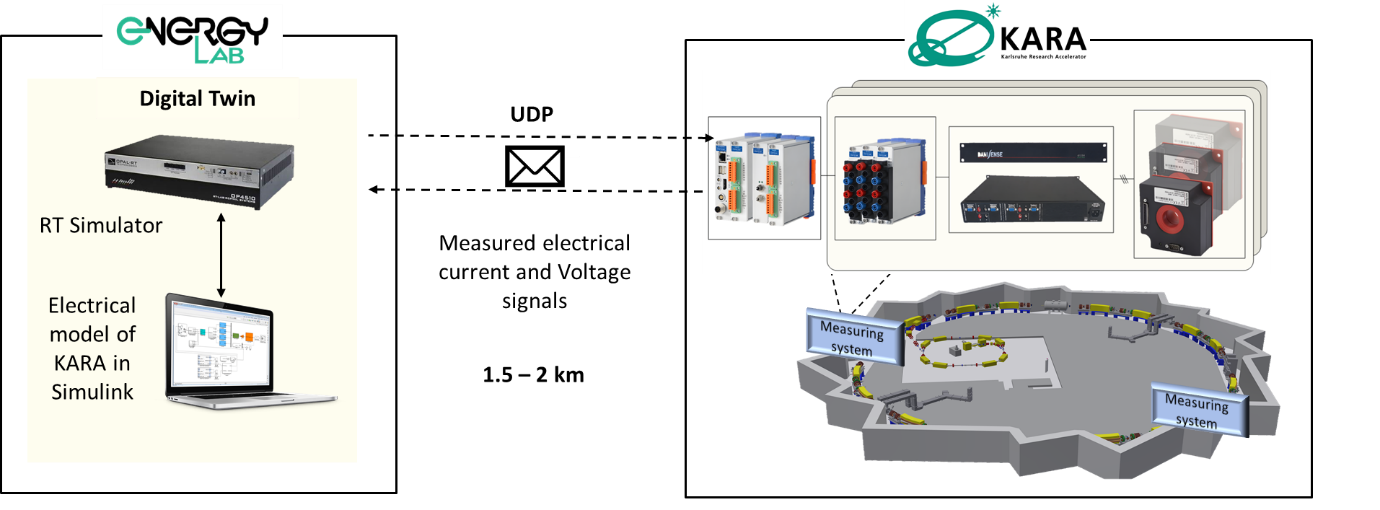
Advantages and research goals
Using the Digital KARA Twin, we can explore ways to optimize load consumption during experiments and validate energy management solutions through Power-Hardware-In-the-Loop testing:
- The Digital Twin allows for the accurate reproduction of the actual facility and enables experimental validation of improvements in energy management and power quality.
- A Digital Twin enables the testing of novel controllers or technologies without the need for real hardware, which can be costly or difficult to access. This creates a safer environment for conducting “risky testing,” such as fault scenarios, without putting the actual system at risk.
- Using a Digital Twin can be used without disrupting research work, because they eliminate the need to wait for system downtimes, such as accelerator shutdowns. This can significantly reduce integration time and streamline the development process.
- The research aims to find out, how KARA can participate in the provision of ancillary services, like voltage or frequency support. These measures could balance the market and regulate frequencies fitting for the current availabilities.
By using this AI-assisted infrastructure and PHIL, we can improve flexible grid services. This can be achieved by adjusting load consumption based on market needs and integrating low-carbon technologies like photovoltaics and hydrogen-based energy storage systems.
